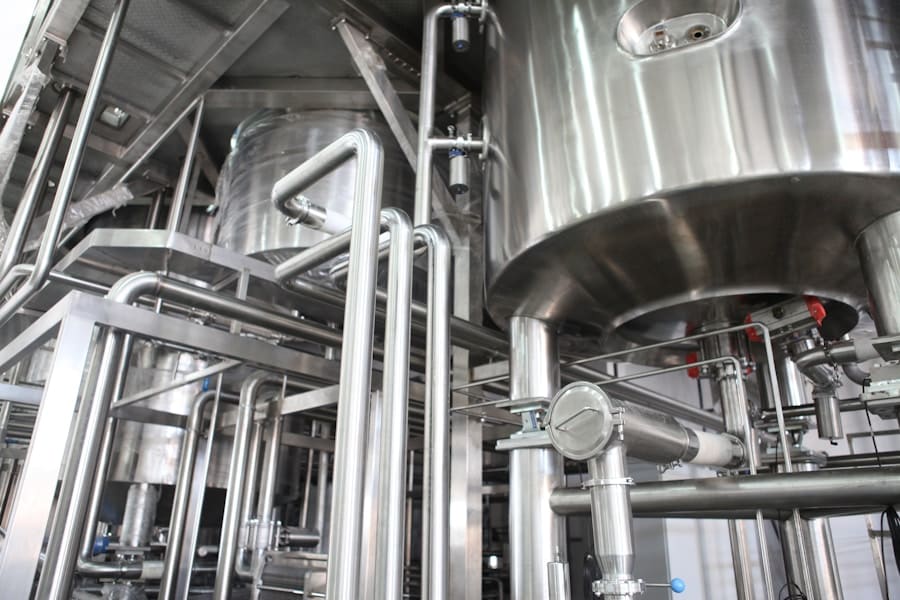Thermal treatment technology is a crucial aspect of the food industry, as it involves the use of heat to process and preserve food products. This technology has been used for centuries, with traditional methods such as smoking and cooking being the primary means of thermal treatment. However, advancements in machinery and equipment have revolutionized the way food is processed and preserved, leading to increased efficiency and improved product quality. Thermal treatment technology plays a vital role in ensuring food safety and extending the shelf life of perishable products, making it an essential component of the modern food industry.
Advancements in Food Thermal Treatment Machinery
In recent years, there have been significant advancements in food thermal treatment machinery, leading to improved processing capabilities and enhanced product quality. One of the most notable advancements is the development of high-pressure processing (HPP) equipment, which uses intense pressure to kill bacteria and extend the shelf life of food products without the need for heat. This technology has revolutionized the way perishable products are preserved, allowing for the production of fresh, high-quality foods with minimal impact on nutritional value. Additionally, advancements in thermal processing equipment have led to the development of more efficient and precise cooking and smoking technologies, allowing for greater control over the flavor and texture of food products.
Industrial Smoking and Cooking Technologies
Industrial smoking and cooking technologies have seen significant advancements in recent years, with the development of new equipment and processes that improve efficiency and product quality. Traditional smoking methods have been replaced by modern smoking technologies that use controlled airflow and temperature to produce consistent results. Similarly, cooking technologies have evolved to include precise temperature control and automated processes, leading to improved product consistency and reduced energy consumption. These advancements have revolutionized the way food is processed and preserved, allowing for the production of high-quality products with minimal environmental impact.
Benefits of Cutting-Edge Thermal Treatment Technology
The use of cutting-edge thermal treatment technology offers a wide range of benefits for the food industry. One of the most significant benefits is the ability to extend the shelf life of perishable products, reducing food waste and increasing profitability. Additionally, advanced thermal treatment machinery allows for greater control over product quality, leading to improved taste, texture, and nutritional value. Furthermore, these technologies offer increased efficiency and reduced energy consumption, leading to lower production costs and a smaller environmental footprint. Overall, cutting-edge thermal treatment technology provides the food industry with the tools needed to produce high-quality products while minimizing waste and environmental impact.
Sustainability and Efficiency in Thermal Treatment Machinery
Sustainability and efficiency are key considerations in the development of thermal treatment machinery, as the food industry seeks to minimize its environmental impact while maximizing productivity. Advancements in thermal treatment technology have led to the development of more energy-efficient equipment and processes, reducing the industry’s reliance on fossil fuels and lowering greenhouse gas emissions. Additionally, these advancements have led to improved water and resource management, further reducing the environmental impact of food processing operations. By prioritizing sustainability and efficiency in thermal treatment machinery, the food industry can reduce its environmental footprint while maintaining high levels of productivity and profitability.
Future Trends and Developments in Thermal Treatment Technology
The future of thermal treatment technology in the food industry is likely to be shaped by continued advancements in equipment and processes that improve efficiency, sustainability, and product quality. One of the most significant trends is the development of smart thermal treatment machinery that uses advanced sensors and automation to optimize processing parameters and reduce energy consumption. Additionally, there is a growing focus on the use of renewable energy sources to power thermal treatment equipment, further reducing the industry’s reliance on fossil fuels. Furthermore, advancements in food safety technology are likely to play a significant role in shaping the future of thermal treatment machinery, as new methods for pathogen detection and control are developed.
Considerations for Implementing Thermal Treatment Innovations in Food Industry
When implementing thermal treatment innovations in the food industry, there are several key considerations that must be taken into account. First and foremost, it is essential to ensure that new equipment and processes comply with food safety regulations and industry standards. Additionally, companies must consider the potential impact of new thermal treatment technology on product quality, shelf life, and energy consumption. Furthermore, it is crucial to consider the training and education of staff members who will be operating new equipment, as well as the potential need for additional maintenance and support services. By carefully considering these factors, companies can successfully implement thermal treatment innovations that improve efficiency, sustainability, and product quality while maintaining compliance with industry regulations.
In conclusion, thermal treatment technology plays a crucial role in the food industry, with advancements in machinery and equipment leading to improved efficiency, sustainability, and product quality. The development of cutting-edge thermal treatment machinery has revolutionized the way food is processed and preserved, offering a wide range of benefits for companies seeking to minimize waste and environmental impact while maximizing profitability. As future trends and developments continue to shape the industry, it is essential for companies to carefully consider the implementation of new thermal treatment innovations to ensure compliance with regulations and industry standards while maximizing the potential benefits of these advancements. By prioritizing sustainability, efficiency, and product quality, the food industry can continue to benefit from cutting-edge thermal treatment technology for years to come.




